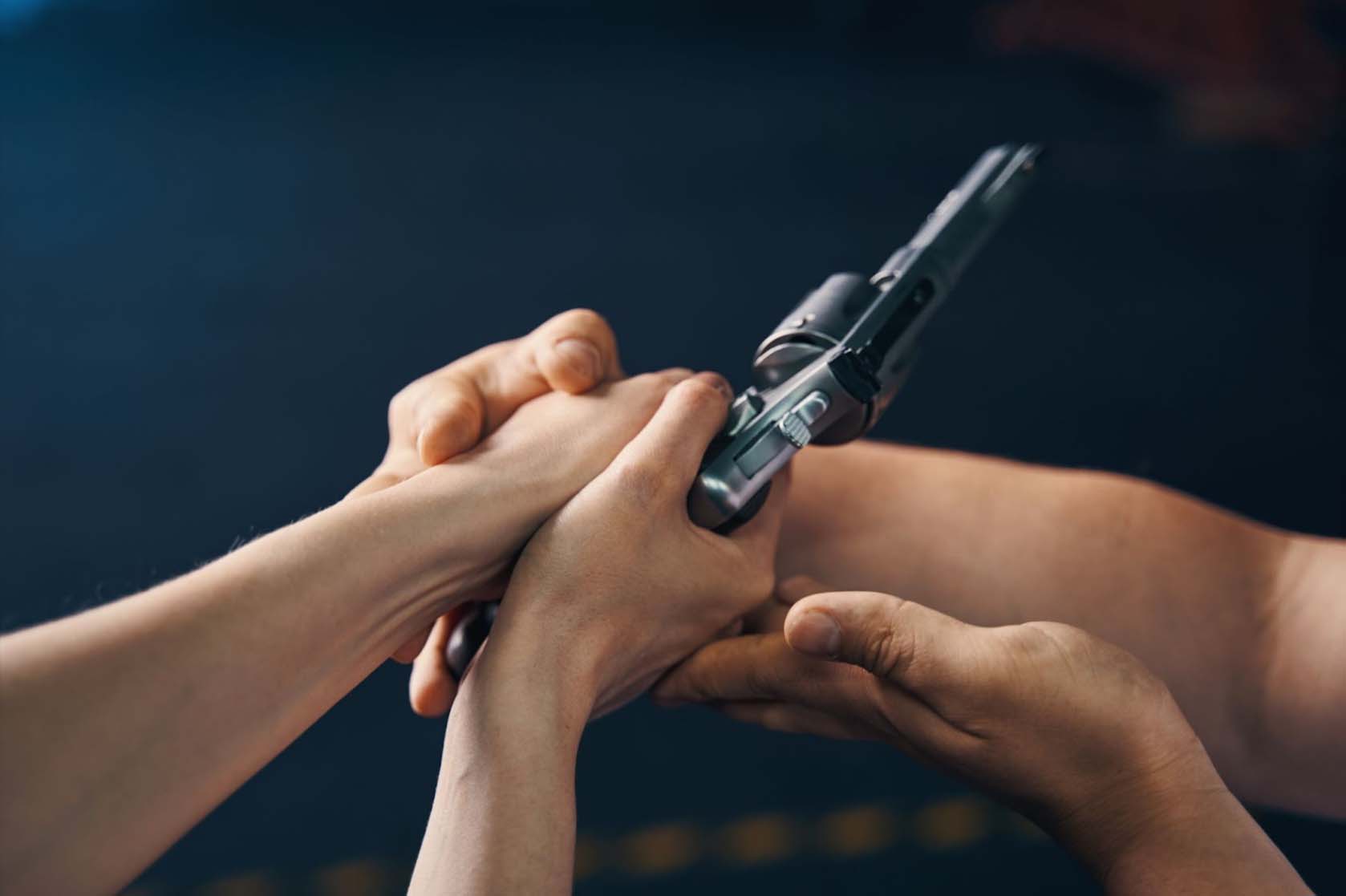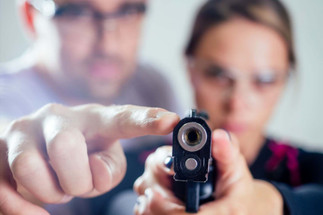Jun 4th 2024
Top 4 Rules of Gun Safety
Top 4 Rules of Gun Safety
Gun safety is paramount for anyone who handles firearms, whether for sport, defense, or professional use. The consequences of negligence can be irreversible, affecting not just the gun handler but innocent bystanders and loved ones.
Recognizing the critical importance of responsible gun handling, experts have distilled gun safety into four cardinal rules. Adhering to these can significantly reduce the risk of accidental discharges and ensure a safe environment for everyone. This article delves into each rule, offering insights, practical applications, and tips for incorporating these safety measures into everyday handling.
The Four Primary Gun Safety Rules
Diving into the core of responsible firearm handling, let's explore the top four gun safety rules that every gun owner should engrain into their practice.
Rule 1: Treat All Guns as Though They Are Loaded
The first rule of gun safety serves as the foundation for responsible gun handling: always treat guns as if they are loaded. This mindset ensures that one approaches every interaction with a firearm with the utmost caution and respect. The rationale is psychological; by treating a gun as loaded, one is less likely to become complacent and more likely to engage in safe handling practices.
This rule's importance cannot be overstated in real-life scenarios. There have been countless incidents where a firearm was presumed unloaded, leading to tragic accidents. To implement this rule, always check the chamber and magazine upon picking up a gun, regardless of your last interaction. Visual and physical inspection reinforces the habit and ensures safety for yourself and those around you.
Rule 2: Never Point a Gun at Anything You Are Not Willing to Destroy
This rule underscores the importance of muzzle control, a critical aspect of gun safety. The direction in which gun points should always be consciously controlled, ensuring it never aims at anything not intended as a target. This practice prevents accidental harm should the gun discharge unexpectedly.
The consequences of failing to adhere to this rule can be dire, as demonstrated by numerous incidents of unintentional harm to people and property. Cultivating the habit of conscious muzzle awareness is crucial, beginning with always being mindful of where the gun points, even when unloaded. Training with a professional can instill these habits, always emphasizing the gravity of muzzle direction.
Rule 3: Keep Your Finger Off the Trigger Until Your Sights are on Target
Trigger discipline is at the heart of this rule. It prevents accidental discharges by ensuring one's finger remains outside the trigger guard until ready to shoot. This principle is vital in maintaining control over when the gun fires, significantly reducing the likelihood of an accidental discharge.
Developing strong trigger discipline involves training and practice. One effective method is dry fire practice, where one handles the firearm without ammunition. This method allows individuals to focus on finger placement without the distraction of live firing, building muscle memory that translates into safer handling during live fire situations.
Rule 4: Always Be Sure of Your Target and What's Beyond It
It is crucial for responsible shooting to identify the target and understand what lies beyond it. This rule ensures the shooter knows the target's surroundings, preventing accidental harm to unintended targets or property. It involves clear sightlines to the target and understanding the bullet's potential path.
Adhering to this rule requires constant awareness and consideration of the environment. It means not firing in conditions with compromised visibility or uncertainty about what lies beyond the target. This practice is critical in hunting and populated areas with dynamic and unpredictable backgrounds.

The four rules of gun safety form the bedrock of responsible firearm handling. They serve as a constant reminder of the power and responsibility that come with gun ownership. By internalizing and practicing these rules, individuals contribute to a safer environment for themselves and those around them. Education and ongoing practice in gun safety are indispensable, ensuring that these principles become second nature to all gun handlers.
Gun Safety Guidelines: Beyond the Basics
While the top four gun safety rules lay the groundwork for responsible gun ownership, a comprehensive approach to firearm safety extends far beyond. This expanded set of guidelines ensures that every aspect of gun ownership, from storage to usage, adheres to the highest standards of safety and responsibility.
Ensuring Firearms are Safely Stored
A cornerstone of gun safety is the secure storage of firearms, crucial for preventing unauthorized access, theft, and accidents. Safe storage solutions, such as gun safes, lock boxes, and trigger locks, are indispensable tools for any gun owner.
Effective storage involves:
Utilizing Gun Safes
High-quality safes offer robust protection and can be bolted to the structure of your home for added security.
Using Trigger Locks and Cable Locks
These devices provide an additional layer of security, preventing the firearm from being loaded or fired by unauthorized users.
Educating Family Members
All household members should be aware of gun safety practices, with particular attention to educating children about the dangers of firearms and the importance of not handling them without adult supervision.
Maintaining Firearms for Safety and Reliability
A well-maintained firearm is a safer firearm. Regular cleaning and inspection ensure that guns function as expected when needed, reducing the risk of malfunctions that could lead to accidents. Critical maintenance practices include:
Routine Cleaning
Following manufacturer guidelines for cleaning keeps a firearm in optimal working condition.
Inspection for Wear and Damage
Regularly check for signs of wear, corrosion, or damage that could affect the firearm's safety and functionality.
Professional Servicing
Professional servicing by a certified gunsmith is recommended for complex issues or annual check-ups.
Mental and Emotional Readiness For Gun Ownership
Mental fitness isn't just an optional attribute but a fundamental requirement for anyone who owns or operates a firearm. This aspect of gun safety calls for a proactive approach to self-assessment, ensuring the gun owner is always in a state conducive to safe handling.
Recognizing and acknowledging one's mental and emotional state before engaging with a firearm can mean the difference between responsible use and potential tragedy. High-stress situations, emotional turmoil, or any mental state that could cloud judgment and decision-making processes must be taken seriously. Gun owners are encouraged to develop an acute sense of self-awareness and to have the discipline to step back when conditions are not suitable for safe firearm handling. It can involve setting up personal checks and balances, such as seeking the opinion of a trusted individual about one's current state or having protocols for safe gun storage that can be enacted during these times.

Lifelong Learning for Gun Owners
Gun safety education and ongoing training are essential for new and experienced gun owners. This encompasses:
Formal Safety Courses
Certified safety courses provide comprehensive education on safe handling, storage, and usage practices.
Practice and Proficiency
Regular practice at a range under safe conditions helps maintain shooting skills and safety awareness.
Staying Informed on Laws and Regulations
Gun owners should keep up-to-date with local, state, and federal firearms laws and regulations.
The Non-Negotiable Rule of Sobriety in Firearm Handling
Introducing alcohol or drugs into any scenario involving firearms is a recipe for disaster. The impairing effects of substances on judgment, reaction times, and motor skills are well-documented and can transform a gun from a tool of security into a significant liability. The principle of sobriety while handling firearms is absolute; there can be no compromise when it comes to the influence of mind-altering substances.
This steadfast rule demands a commitment to clear-headedness in all matters involving firearms. It's not just about avoiding alcohol or drugs while physically handling a gun but also recognizing the lasting effects these substances can have. Impairment can linger well beyond the initial consumption, affecting one's ability to make sound decisions hours or even days later. Therefore, a strict policy of sobriety must govern the life of a gun owner, ensuring that the utmost care and responsibility underpin every interaction with their firearm.
Adapting Practices to Your Surroundings
The final layer of gun safety involves being acutely aware of your environment and adapting safety practices accordingly. Always be mindful of what lies beyond your target to avoid unintended harm, whether at a range or in a more natural setting. Adjust your handling and safety measures to suit environmental conditions like weather, lighting, and terrain.
Locking Down Safety Through Responsible Gun Ownership
The expanded gun safety guidelines underscore the depth and breadth of responsible firearm ownership. Beyond the foundational rules of gun safety, a comprehensive approach includes meticulous attention to storage, maintenance, education, mental fitness, sobriety, and environmental awareness.
Each layer of safety practice weaves together a tapestry of preventative measures, safeguarding the gun owner and the community. Embracing these principles fosters a culture of respect, responsibility, and safety that honors the privilege of gun ownership.
Visit our Gunline Shooting blog to learn more about available guns, accessories, and more!

